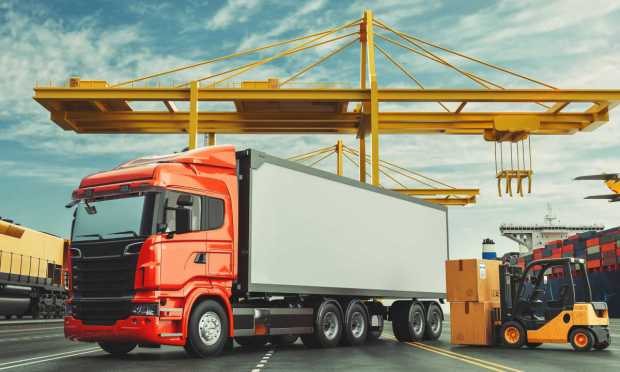X Delivery CEO Says Shipping Isn’t Cost Center for Brands, It’s Deal Closer

Shipping costs have traditionally been taken for granted as an expense the buyer needed to bear. In consumer markets, that presumption has fallen by the wayside. In the wake of the pandemic, the shift to delivery from in-store shopping proved persistent, and free shipping has become commonplace. Amazon innovated with its Prime membership, including free shipping as a benefit.
Businesses, especially small ones, have adopted consumer behaviors, particularly when it comes to low-ticket, lightweight, off-the-shelf products such as office supplies. And B2B sellers have started taking cues from the consumer market.
Mark Lavelle, CEO of X Delivery, shared insights from his company’s recent research on the value add that shipping delivers in eCommerce in a recent interview with PYMNTS’ Karen Webster. The forum was a Fireside Chat during the FreightWaves and PYMNTS Supply Chain Meets FinTech Virtual Conference.
“Stop thinking of shipping as a cost center and think of it to enhance the brand experience. And if you don’t believe that, then just listen to your customer who’s telling you that,” Lavelle said. “What the product is and how much it costs is important, but just as important is when I get it and how I get it. And that’s the message we continue to reiterate as we talk to people in the industry.”
‘Free’ Has its Costs
When considering how to enhance the brand experience with shipping, there are several options which can be evaluated.
One is free shipping. However, free isn’t always free, and it tends tends to be qualified in several ways in practice: First, the basket dollar amount must exceed a certain threshold; second, the actual price tends to translate into time.
“We’re in this environment where you have fast and very expensive, or free but really slow. The slowest available delivery method is offered at no additional charge,” LaVelle said. “Ground expedited is free, and that can be anywhere from five to really 11 or 12 days from the time you order the product. The next phase is to offer some form of expedited shipping. In those, buyers pay a premium to get delivery within one, two or three days.”
LaVelle cites research that shows consumers are willing to pay up to $7 per order for expedited shipping without dramatically impacting price elasticity of demand.
His firm helps businesses deliver quickly at that price point by aggregating unused air cargo capacity for the middle mile of shipment journeys and coordinating with last-mile carriers. He also asserts that offering more shipping options reduces shopping cart abandonment. Furthermore, he says keeping customers posted on their packages’ progress establishes a stronger relationship.
With the supply chain still snarled, businesses are often willing to pay a premium for faster delivery, even getting into bidding wars to get their containers on ships.
Lavelle also said that businesses with higher margins have greater ability to offer free shipping by bundling the costs of standard delivery into their prices. This holds true on the for businesses selling to other businesses as well, but runs against the grain of more sophisticated purchasers who want to break down bids by line item.
Making It Happen
Companies like X Delivery orchestrate delivery from the first to last mile. Along with that, they also orchestrate funds flow.
“You’re handling the payments to sometimes five or six different providers that are that are doing that and you’re reconciling back to the brand. It’s generally done on commercial terms of anywhere from zero to 15 to 30 days. It’s a smaller margin business than say software or some payments businesses. So, it’s very important to have timing and speed of payments to make the business work,” according to LaVelle.
This is accomplished with APIs to acknowledge time and date stamps, package weight, and cost to facilitate prompt reconciliation in as near real time as possible.
Speedy, transparent billing is part and parcel of the efficiency of the network as well as to transparency and efficient delivery from both the shipper and recipient perspective, and that’s what it takes to close the sale in the digital age.
“Getting our partners paid is just as important as us getting paid,” Lavelle said.
For all PYMNTS B2B coverage, subscribe to the daily B2B Newsletter.
